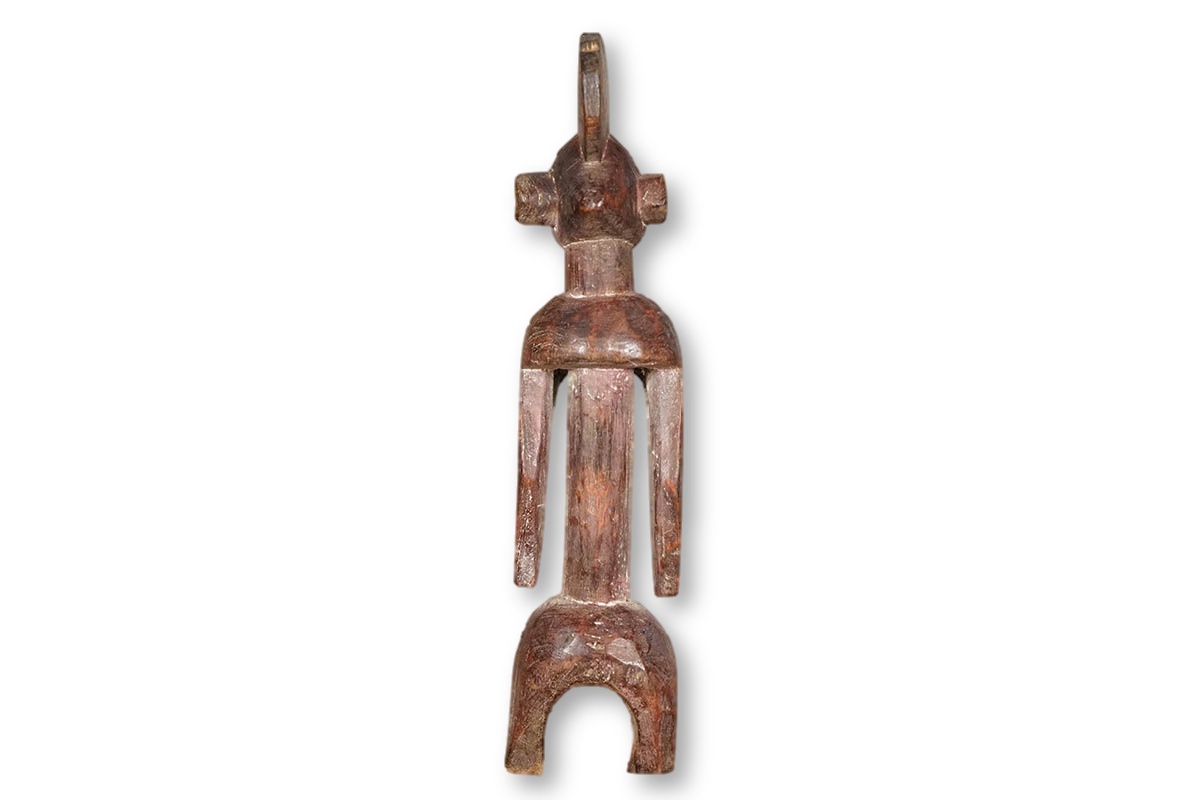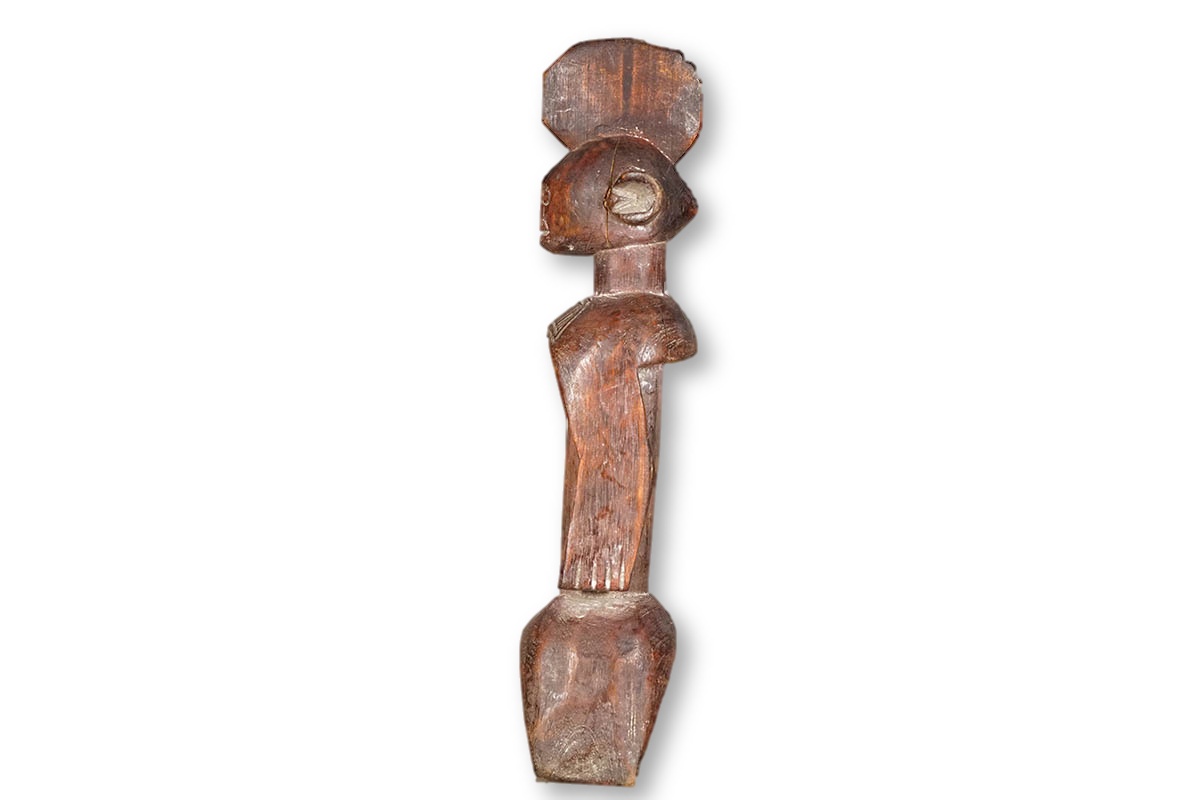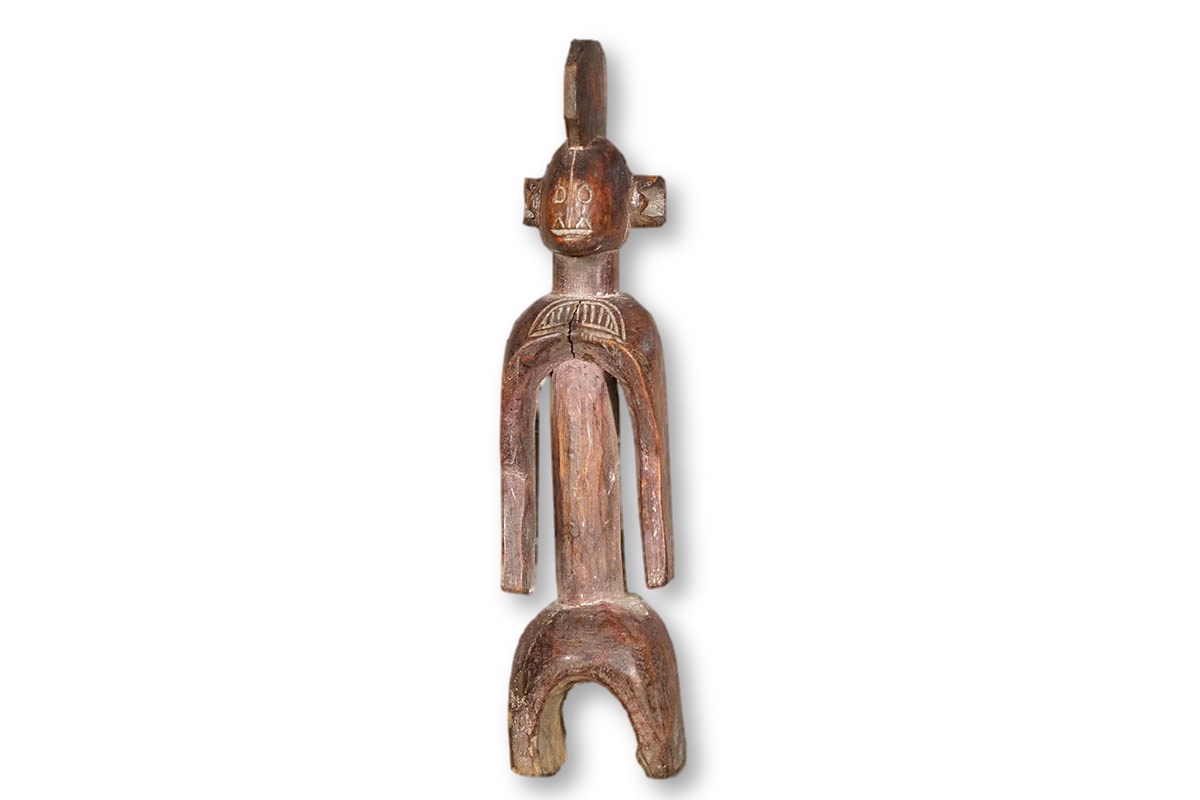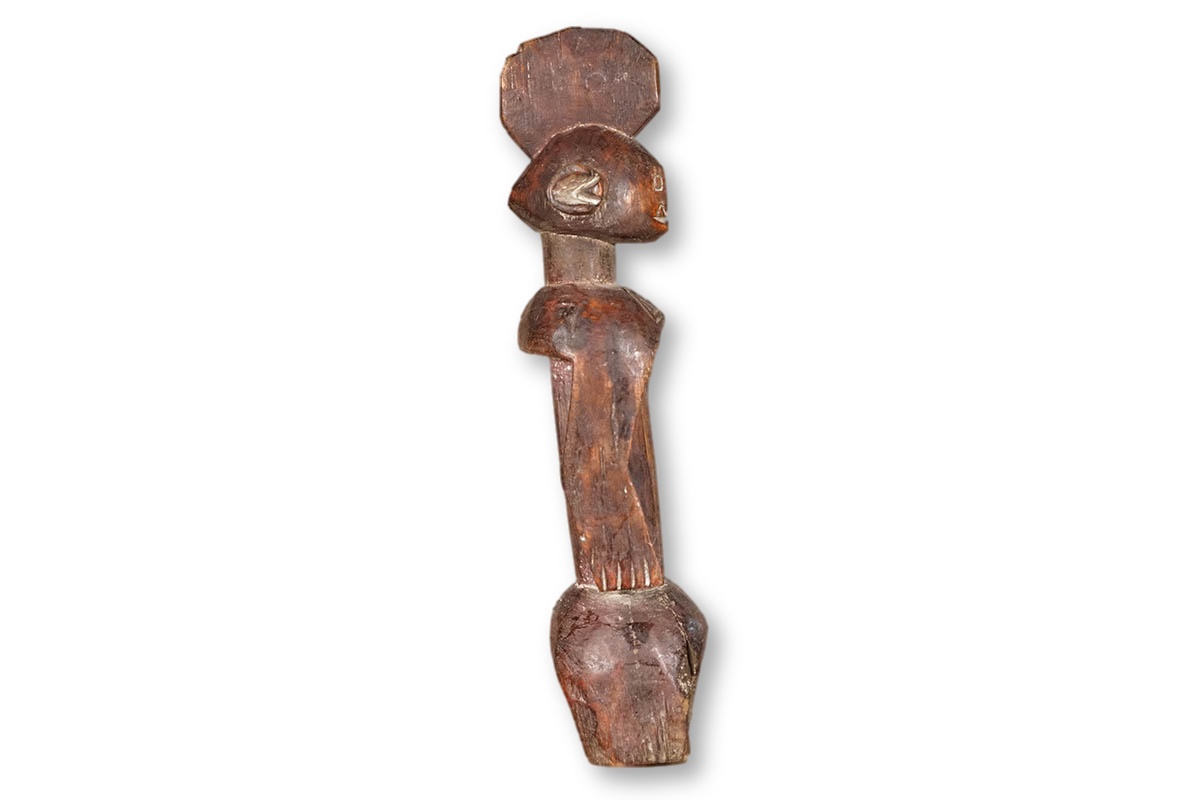This hand-carved wooden statue has features that resemble both the Chamba and Mumuye peoples. The figure measures 14 inches tall and weighs 1 pound.
Chamba or Mumuye Statue 14″ – Nigeria – African Art
$32.50
1 in stock

| Type of Object | Figure, statue |
|---|---|
| Country of Origin | Nigeria |
| Ethnicity | Chamba, Mumuye |
| Material | Wood, Pigment, Beads |
| Approximate Age | Unknown |
| Height | 14" |
| Width | 3" |
| Depth | 3" |
| Weight | 1lb |
| Overall Condition | Possible minor imperfections and wear & tear, including but not limited to scuffing, cracking and minimal chipping. Possible previous repairs. See photos or inquire for more details. |
Tribe Information
About the Chamba People
The area lying to the north of the Niger and Benue Rivers includes a range of mountains covered by a savannah. Archaeological excavations have revealed traces of human activity on the Jos plateau and in the Benue River valley dating from the Stone Age – 39,000 years ago.
Over time, the indigenous Benue-Kongo and Adamawa-speaking people of this area were infiltrated by Chad-speaking tribes who migrated from the east and north. This created a mosaic of people with different social and religious traditions. Nevertheless, common artistic conventions can be found among the majority of the people who live in this area. For example, shoulder masks are worn by the Mumuye, the Jukun and Waja people and red seeds are often applied on the surface of headdresses and masks.
Tribes such as the Mumuye, the Chambe, the Jukun, the Wurkun, the Goemai and the Montol live along the Benue River in eastern Nigeria, while the Waja, the Mama, the Hausa, the Koro and the Dakakari people settled in the northern part of the country.
The 20,000 Chamba people live south of the Benue River, near the Jukun people. They are socially divided into small kingdoms, each headed by a king assisted by a council of elders whose powers are regulated by male and female secret societies.
Masks
The Chamba use a type of mask that symbolizes a bush spirit. It has a rounded head with a flattened open mouth and two large backward-sloping horns. It is worn during funerals, circumcisions and inauguration ceremonies.
Figures
Chamba figures are rare and their function is uncertain. They are usually covered with an encrusted patina. Another type of Chamba figure is thought to be a medium for communication with the spirit worl. Small figures were used to cure or protect an individual from snake bites and were attached to iron spikes and inserted into the ground.
About the Mumuye People
“Living on the left bank of the Benue River, the 400,000 Mumuye people intensively farm an area of plains. Socially, they are divided into small family groups called Dola, which are headed by a council of elders with an elected leader. The Vabong secret society, of which there are seven grades, regulates Mumuye religious life. Entry into the society is achieved through initiation ceremonies, which include flagellation and an explanation of the meaning of masks and other magical objects.”
Source:
Baquart, Jean-Baptiste. The Tribal Arts of Africa. New York: Thames and Hudson Inc. 1998. Print.
You must be logged in to post a review.







Reviews
There are no reviews yet.